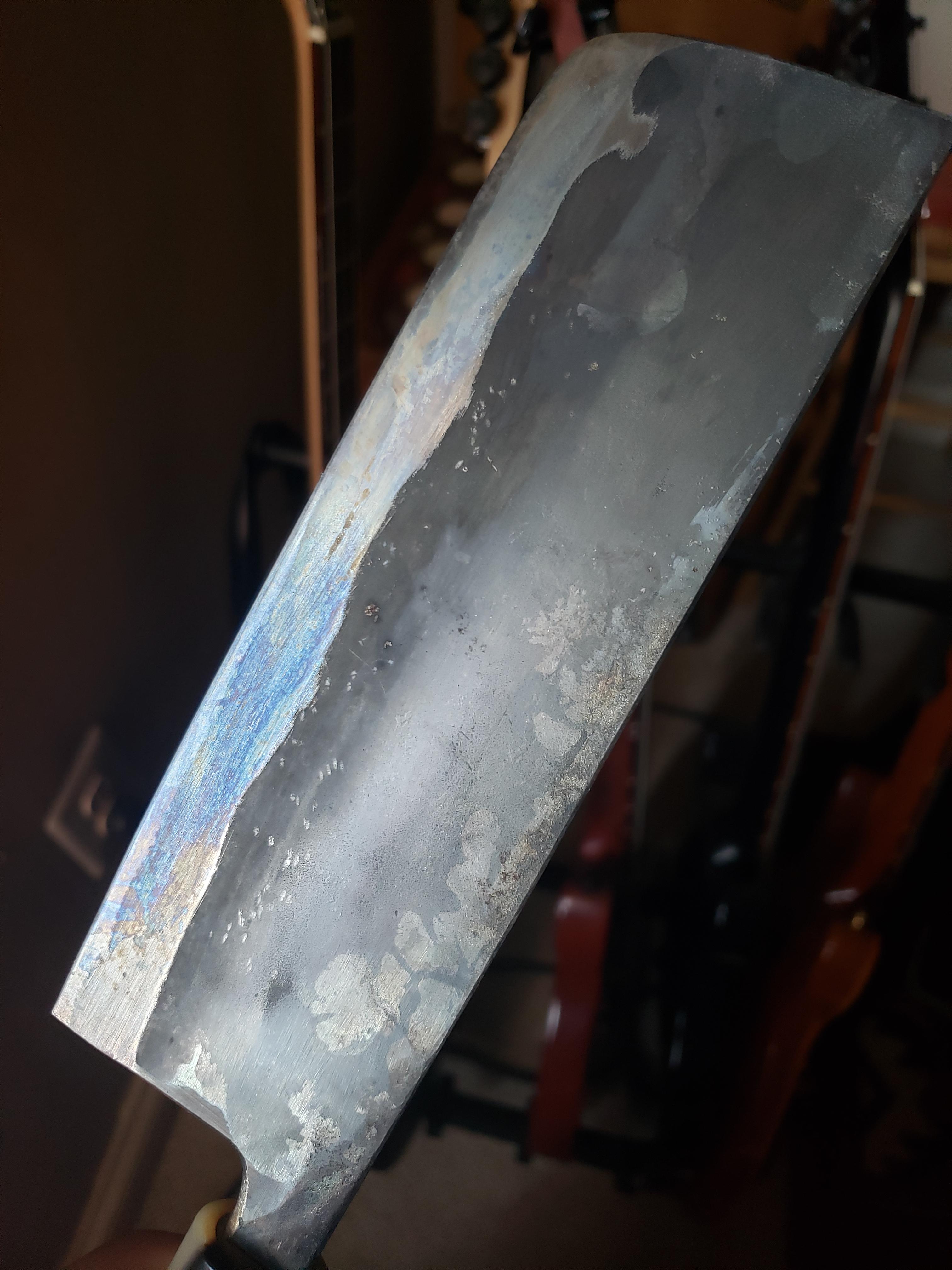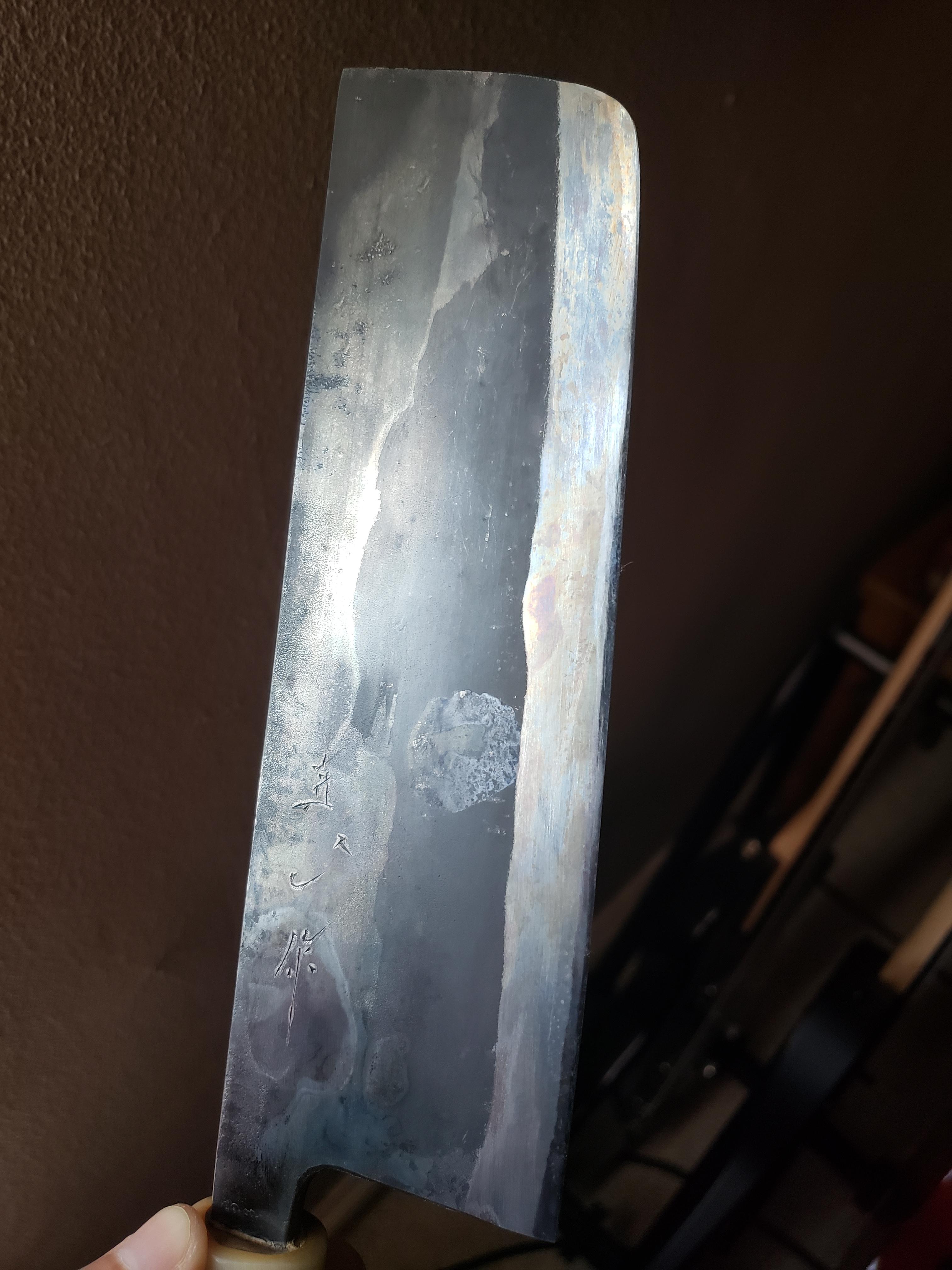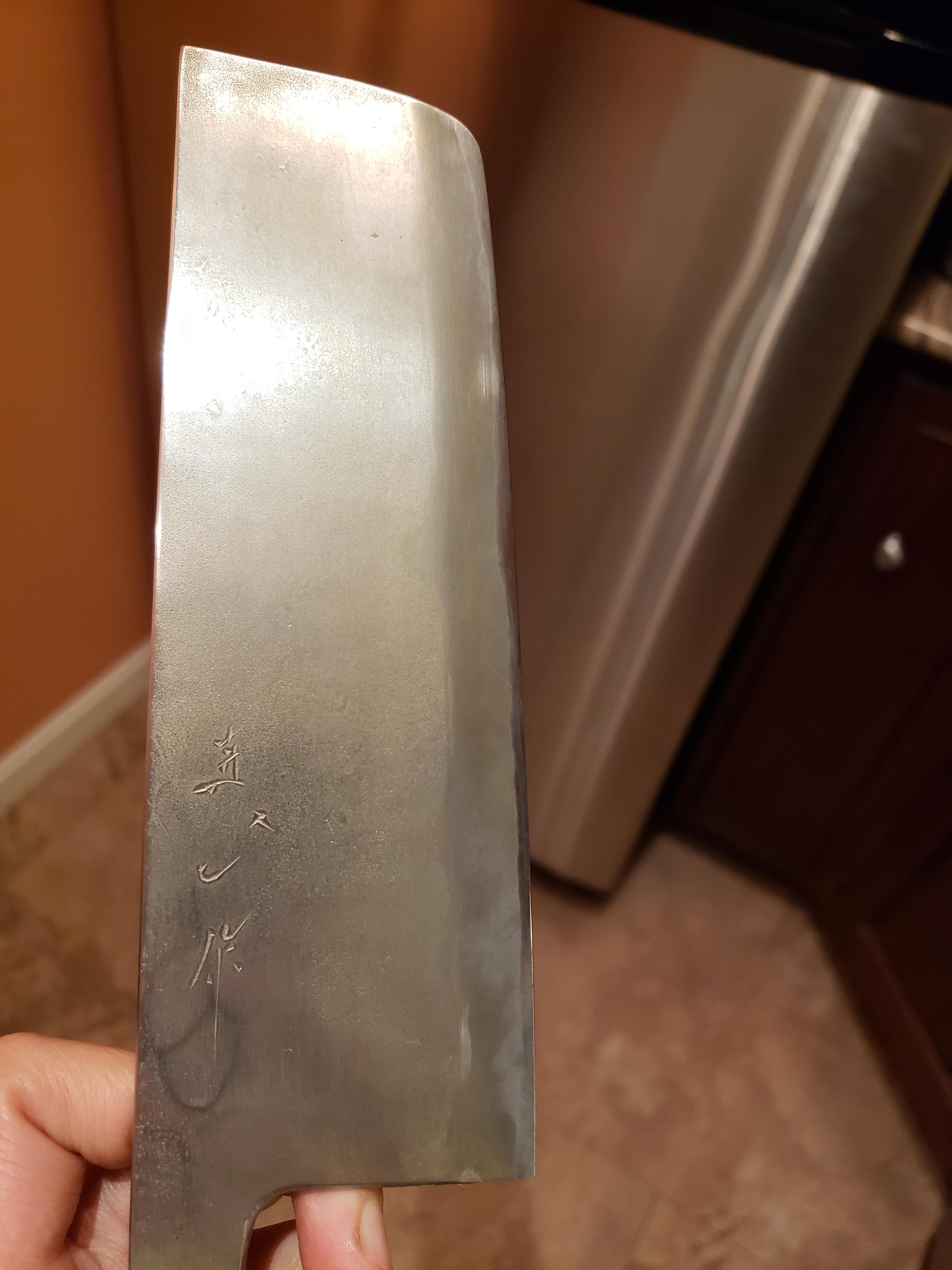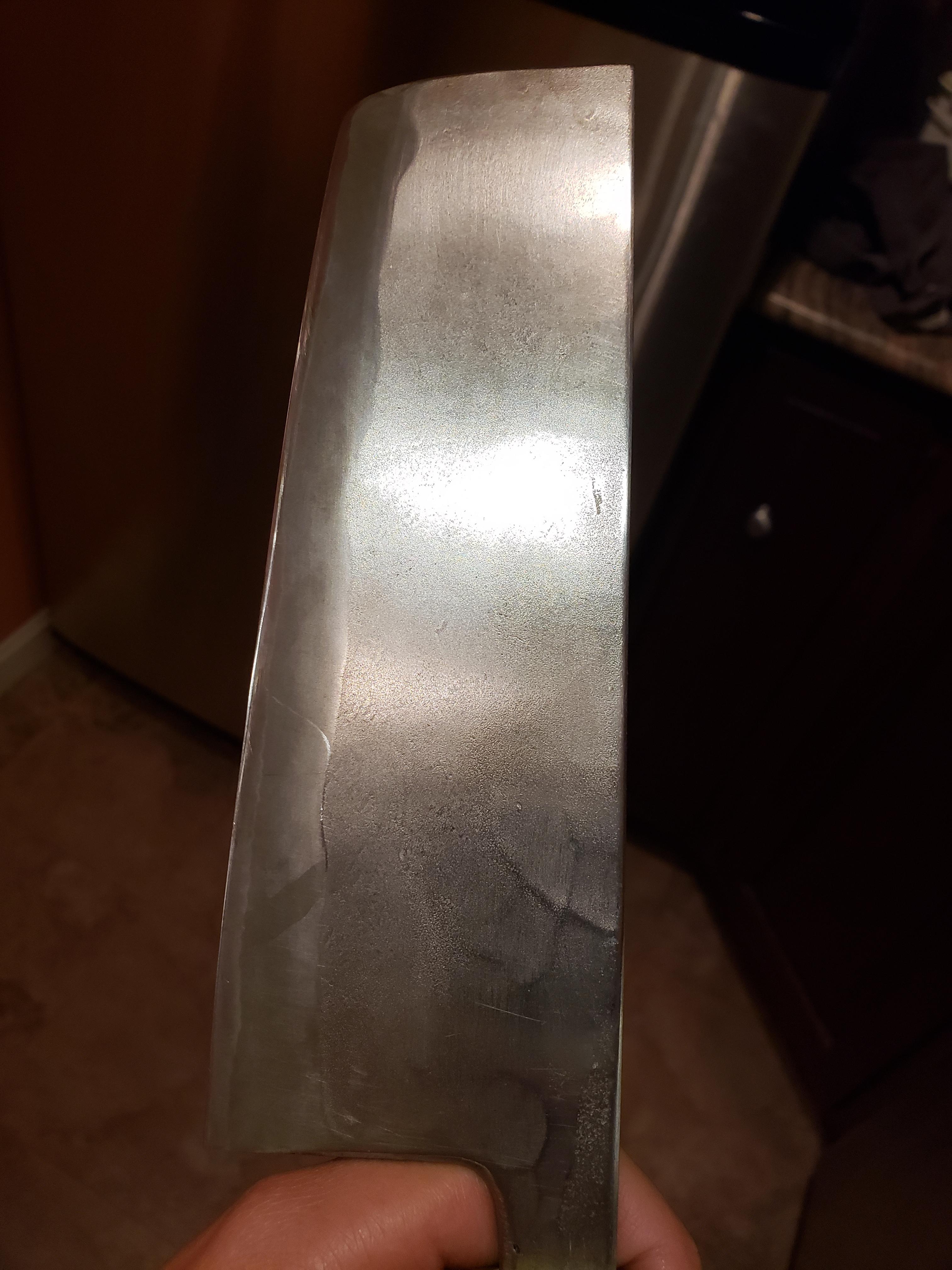CiderBear
Senior Member
Hi all,
A couple days ago I got a one off Watanabe iron clad Nakiri in white steel. The cladding is very reactive - this is what it looks like after 3 meals


However, I'm not into the KU finish on this - it's very blotchy, and completely different from the KU on his Wat Pro nakiri in Blue steel.
I would like to remove the KU finish, and if possible refinish the entire blade in a finish similar to the part that already has patina - I'm guessing this is called a kasumi finish?
I currently have a Gesshin 1000/6000 combo stone, and some wet sandpaper.
I would be grateful if you experts could chime in on how I should go about doing this. Some fine folks have given me advice on the "Show your newest knife buy" threads, but I didn't want to clog that thread with follow up questions, so I thought I would make a separate thread here.
Some bonus questions:
1) Any idea why the KU finish is so blotchy on this knife? There are patches of KU in blue color, so I'm not sure if this is related to the KU process or what.
2) Anyone has advice on how to polish the horn ferrule? It has a sweet half blonde half black ferrule, but it doesn't look as nicely polished as the horn ferrules on my Kochi and Hinoura.
Thank you!
A couple days ago I got a one off Watanabe iron clad Nakiri in white steel. The cladding is very reactive - this is what it looks like after 3 meals


However, I'm not into the KU finish on this - it's very blotchy, and completely different from the KU on his Wat Pro nakiri in Blue steel.
I would like to remove the KU finish, and if possible refinish the entire blade in a finish similar to the part that already has patina - I'm guessing this is called a kasumi finish?
I currently have a Gesshin 1000/6000 combo stone, and some wet sandpaper.
I would be grateful if you experts could chime in on how I should go about doing this. Some fine folks have given me advice on the "Show your newest knife buy" threads, but I didn't want to clog that thread with follow up questions, so I thought I would make a separate thread here.
Some bonus questions:
1) Any idea why the KU finish is so blotchy on this knife? There are patches of KU in blue color, so I'm not sure if this is related to the KU process or what.
2) Anyone has advice on how to polish the horn ferrule? It has a sweet half blonde half black ferrule, but it doesn't look as nicely polished as the horn ferrules on my Kochi and Hinoura.
Thank you!
















